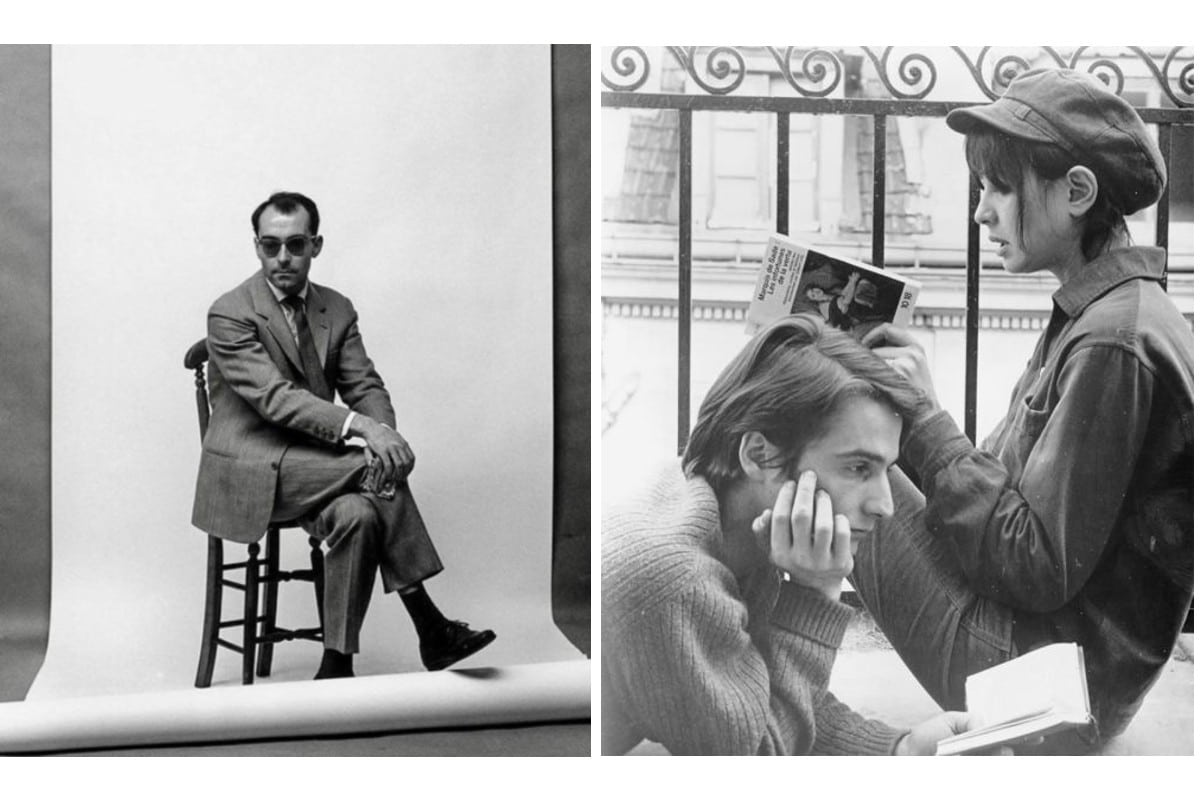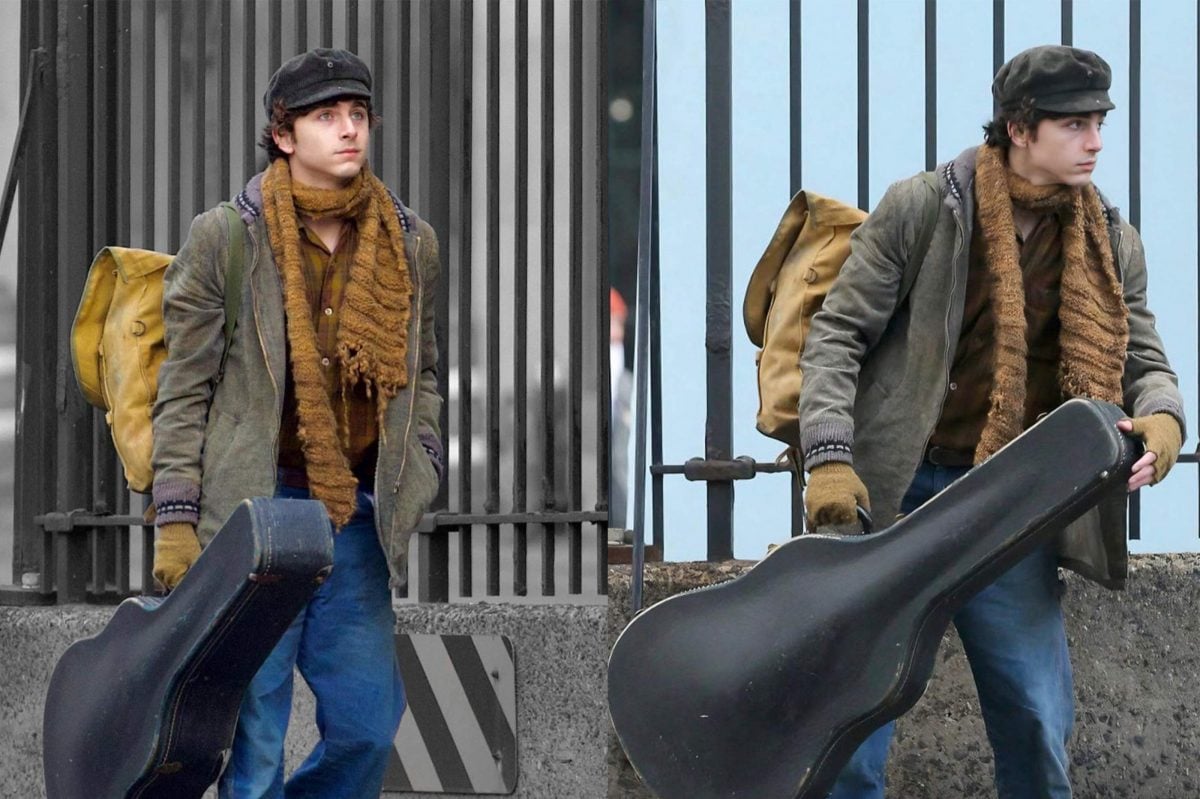
Jean-Luc Godard, one of the pioneers of French New Wave cinema, has died at the age of 91, responsible for some of the best films in the history of French cinema. Rebelling against the cinematic conventions of the 1950s, Godard was one of a troop of directors including Louis Mallee and Francois Truffaut to redefine what cinema is, introducing their own new techniques and passions. Godard is cited as an inspiration and influence to many contemporary filmmakers, most notably modern auteur, Wes Anderson. His work is so particular is is often described only as "Godardian." Here, we look at 13 of the best films by Jean-Luc Godard to watch in his honour.
À bout de souffle (1960)
The first feature-length work from Godard is also considered Jean-Paul Belmondo’s breakthrough as an actor, making this film not one to miss. It stars Belmondo as a criminal named Michel, and Jean Seberg as his American girlfriend, Patricia. What makes the film what it is is that it was to become a key example of New Wave-style cinema and alongside the 400 Blows by Francois Truffaut and Hiroshima mon amour by lain Resnais, it drew international attention to the new style of French filmmaking that emerged in the last 1950s through to the mid-1960s.
Le Mépris (1963)
Starring Birgitte Bardot and Michel Piccoli, Le Mépris is based on 1954 novel, Il disprezzo, by Alberto Moravia. It is one of the most astute pieces of cinema focussing on the breakdown of a marriage, in which we find Piccoli portraying a screenwriter hired by an American producer as a script doctor for an adaptation of Homer’s The Odyssey. However, he is also conflicted by the idea that his wife Camille (Bardot) is simply using him to fuel her own career as a starlet.
Masculin Feminin (1966)
One of Godard’s most iconic works is Masculin Feminin, starring 400 Blows star Jean-Pierre Léaud alongside Chantal Goya, the former portraying Paul, an intellectual and the latter Madeline, a pop star. The pair strike up an affair, despite having vastly different cultural and political views, and eventually become involved with Madeline’s roommates. The film references many pop cultural icons of the time including James Bond, Bob Dylan and Charles de Gaulle.
Vivre Sa Vie (1962)
Starring eternal muse and Godard’s future wife, Anna Karina, in Vivre Sa Vie, we find protagonist Nana Kleinfrankenheim (Karina) is an aspiring actress working in prostitution to support herself. The story is told through twelve docu-realistic vignettes (or, episodes) that explore her alienation from urban life and how men can be, well, truly awful people.
Pierrot le fou (1965)
Based on Lionel White’s 1962 novel, Obsession, Pierrot le Fou was Godard’s 10th feature film, released between Alphaville and Masculin-Féminin. Starring frequent collaborators Karina and Belmondo, it follows Ferdinand, an unhappily married man, as he leaves “boring” society behind and staves from France to the Mediterranean Sea with Marianne, a girl currently being pursed by a bunch of foreign hit-men.
Alphaville (1965)
Alphaville is Godard’s ode to science fiction cinema, a dystopian fantasy film shot in 1960s Paris. The backdrops and scenery are not altered to look futuristic, and in it, we find Lenny Caution (Eddie Constantine), a secret agent working against the backdrop of mid-20th-century modernism. The film is set in the future, yet characters also refer to events that happen in the 20th century
Le Petit Soldat (1963)
Le Petit Soldat tells the tale of Bruno (Michel Suborn) as he endeavours to avoid enlistment in the Algerian war. Along the way, he meets and falls in love with a mysterious woman, adding more complication to his predicament. What Godard does so well is he reinforces the idea of how absurd war and cruelty is and while not as bold as his later works in criticism of war, it is still a jarring exploration of the subject.
Deux Ou Trois Choses Que Je Sais D’elle (1967)
A take on the rampant consumerism of the 20th century, the film centres on Juliette (Marina Vlady), a housewife who turns to sex work to make her mundane suburban life more enjoyable. Some consider it more of an essay than a traditional film, acting as a study of contemporary life. Godard himself narrates the film, discussing his fears of the modern world including the Vietnam War.
La Chinoise (1967)
In La Chinoise, Godard’s academic and philosophical interests are explored, along with his intrigue of Maoism which caused a stir upon the film’s inaugural release. The film follows a philosophy student, along with four other members of a Maoist group as they attempt to change the wold into a communist paradise.
Bande À Part (1964)
Featuring Karina once again, in Band à Part, we follow three assailants who commit a robbery in Paris and while sounding like a typical crime thriller, the film also features some of the most memorable scenes in Godard’s repertoire, including a dance scene that has become iconic in the history of French cinema.
Weekend (1967)
Here, we see France through an anarchic vision, in much a couple (Mirelle Dark and Jean Yanne) are looking to secure an inheritance from a dying man. As the film continues, it descends into insanity, with real blending with surreal and characters from other works of literature randomly appear throughout.
Sympathy for the Devil (1968)
For the decade beginning 1968, Godard began to focus more on political pieces, particularly the ideas of racism and the Vietnam war. One piece from this era is Sympathy for the Devil, combining documentary footage of the Rolling Stones recording the titular song with politically-charged imagery and film footage. In the most flattering of ways, it is somewhat a documentary to turn your brain off and watch, similar to Peter Jackson’s Get Back.
Adieu Au Langage (2014)
A piece of Godard’s contemporary cinema, Adieu au Language is one of the best films concerning philosophy, encouraging audiences to question their perspectives while watching a film. While following a love story, it tells the tale from two different perspectives and employs 3D visuals to emphasise the thoughts and feelings of the characters.
Image: Pinterest



